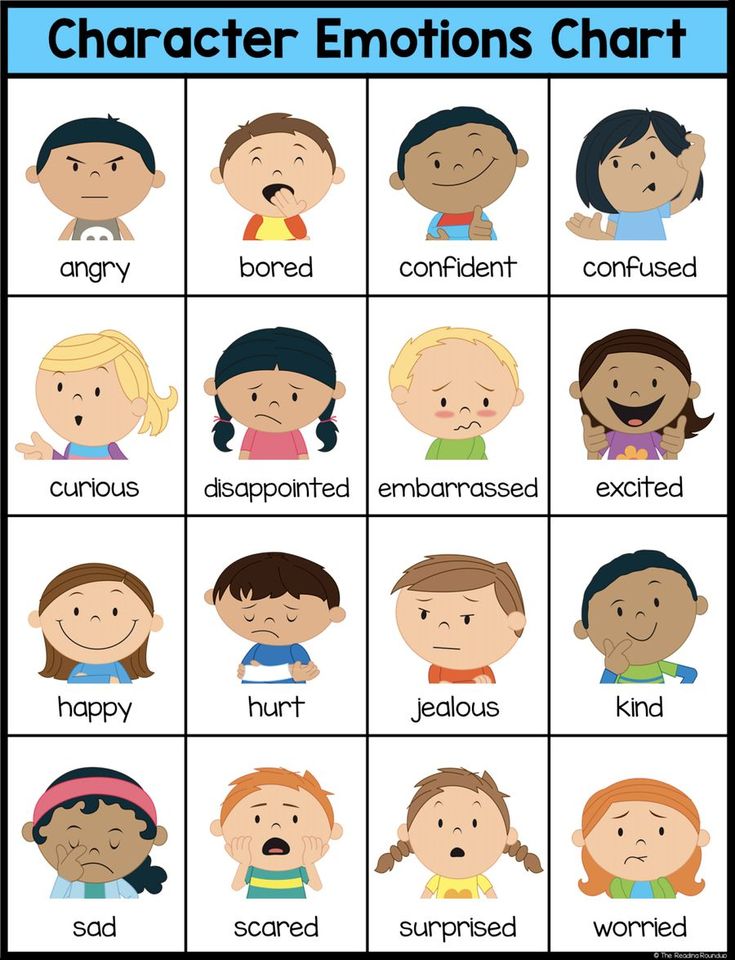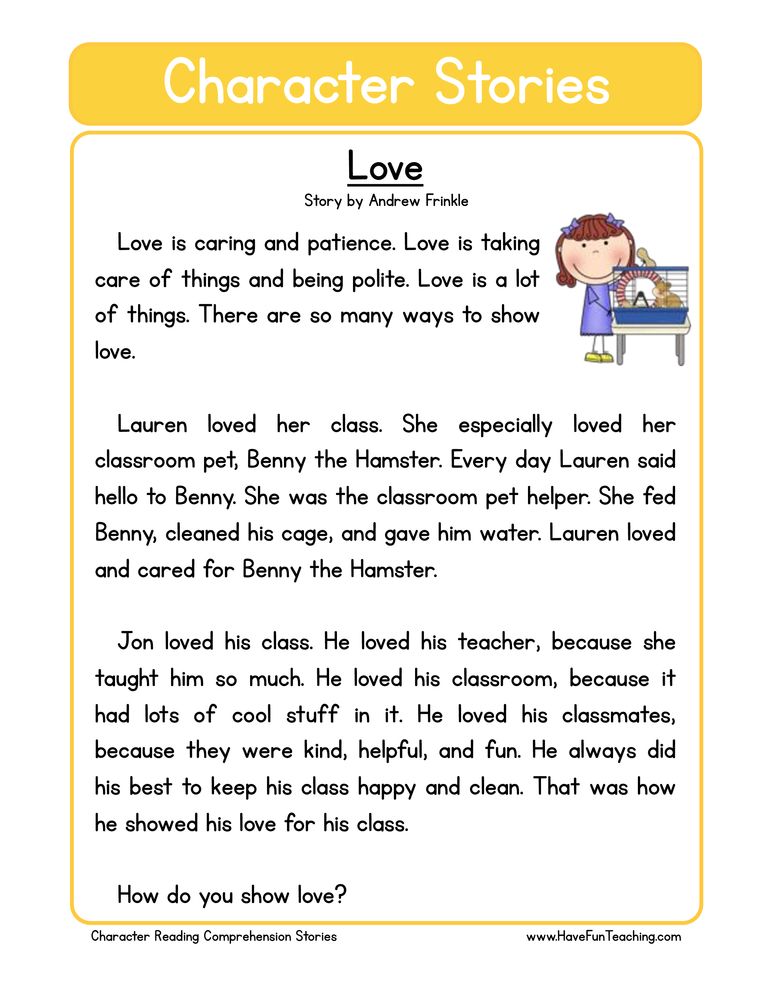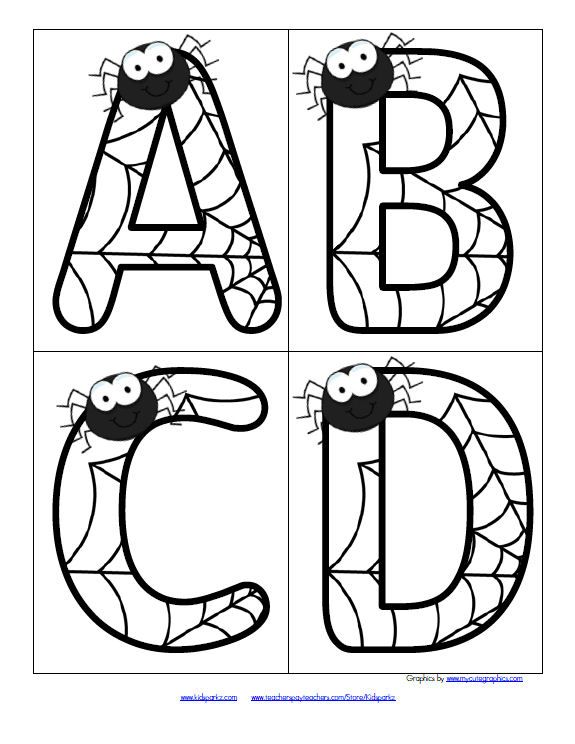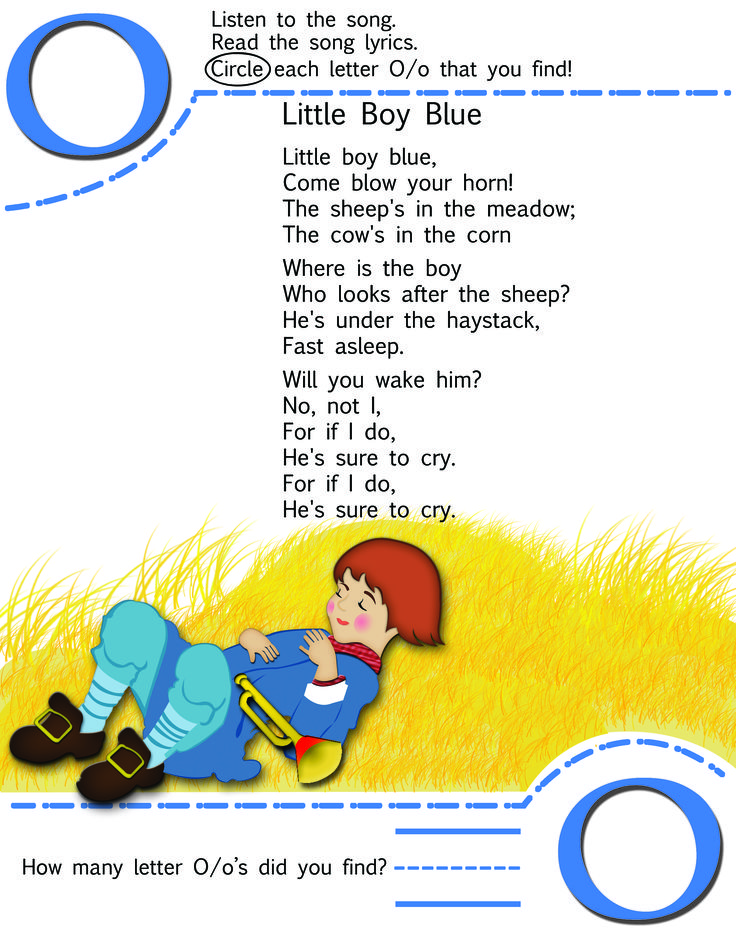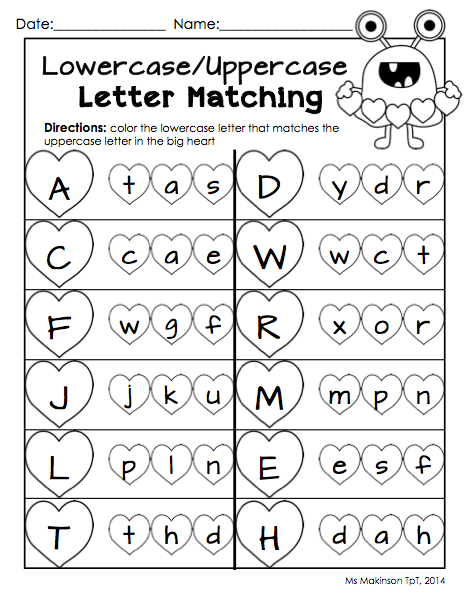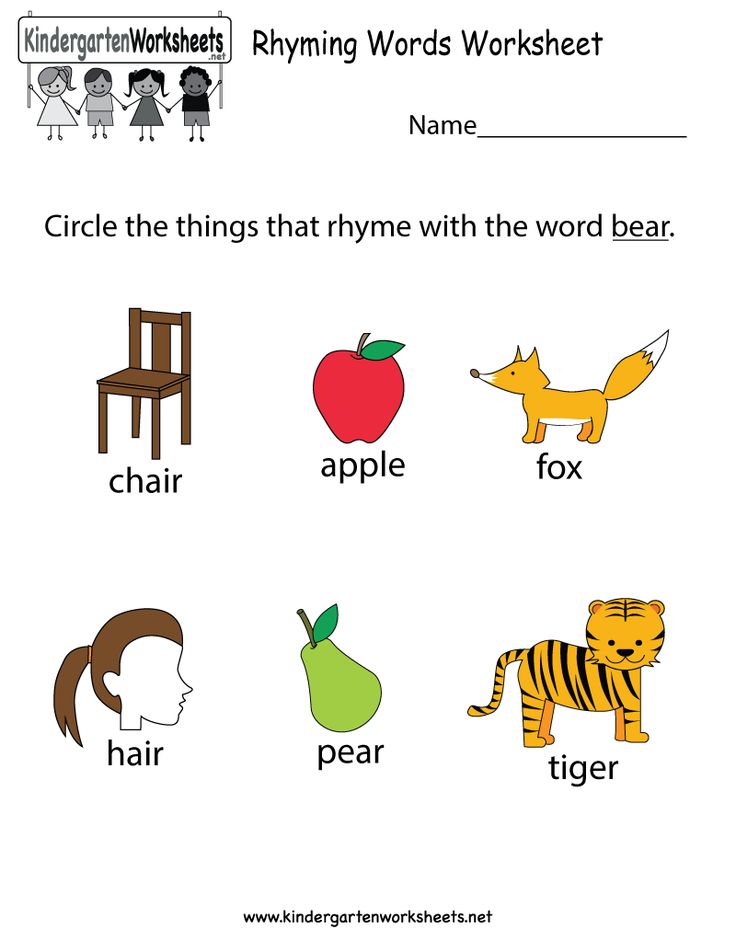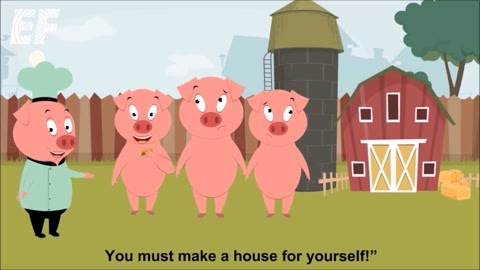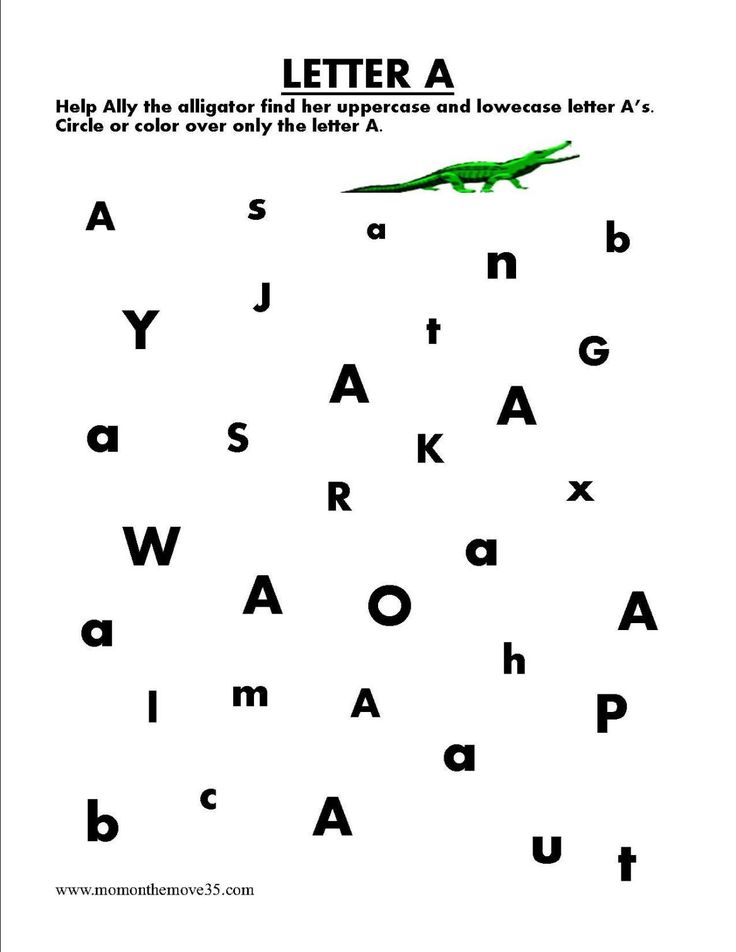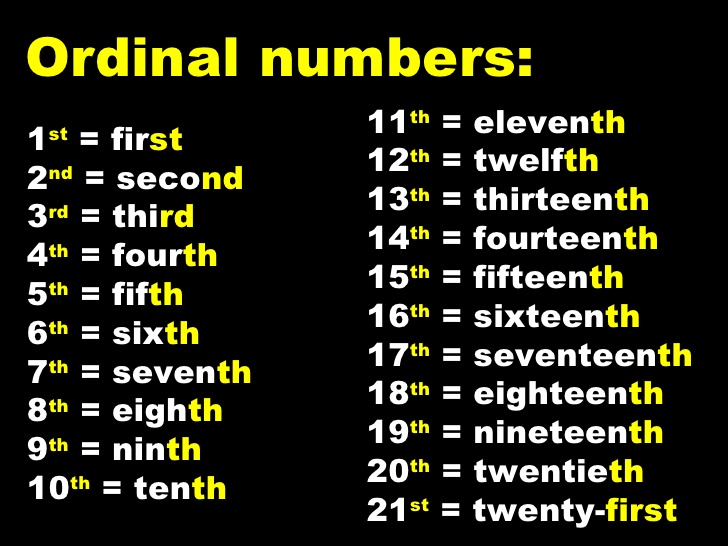Basic emotions for kids
9 Ways To Teach Children About Feelings
I often tell my children to use their words when they are upset. I assume they know what they are feeling and can verbalize it to me. Wrong! It’s difficult for children to say what they are feeling because many times they don’t know what to name the feeling they are experiencing. Instead, they show us how they are feeling by throwing temper tantrums and having meltdowns. We first need to teach children the words to express their feelings before we require them to “use their words.”
Young children can be taught basic emotions such as happy, mad, sad, and scared as early as two years old. As they get older, you can explain emotions such as feeling frustrated, nervous, shy, etc. to them.
Here are some ways you can help your child learn the language they need to express their feelings:
1. Sing songs to help young children learn how to express their feelings. I came across this version of a preschool classic, If you are happy and you know it at Sunflowersstorytime. com. It goes:
If you’re happy and you know it clap your hands.
If you’re surprised and you know it say “Oh my!”
If you’re sad and you know it rub your eyes “Boo hoo”
If you’re scared and you know it shiver and shake.
If you’re sleepy and you know it close your eyes.
If you’re angry and you know it stomp your feet.
And always make sure end up with “happy” again.
They suggest having pictures of each emotion to show the kids as they sing the song.
2. Use games and activities to teach children about feelings.
Children like learning through playing and having fun. A fun game to help kids learn about feelings is Feelings Charades.
For this game you will need to make a feelings cube. Paste pictures of feeling faces on a tissue box. Have kids roll the box and whatever feeling face it lands on they have to act out.
You can find free feeling picture cards here.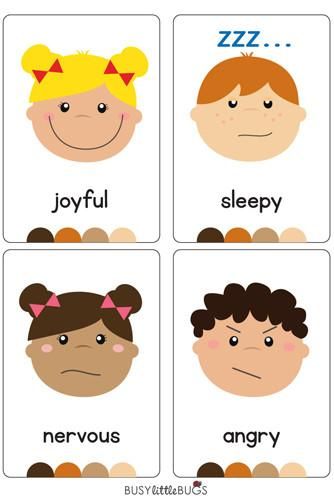
You can also use the cards to play Memory. Simply print out two sets of Feeling Cards, shuffle them and then have your child find the matching Feelings Card.
3. Watch kid-friendly videos about feelings. Kids respond well to visual stimulation. Here are two videos I like to show kids to help them learn about feelings:
- Elf Feelings Video
- The Feeling Song
4. Get into the habit of labeling the feelings you believe your child is experiencing. For example, if your child runs up to you and hugs you as you walk through the door, you can say something like “someone is excited to see me” or “someone is happy I’m home.” Labeling your child’s feelings as they happen helps them to build their feelings vocabulary.
5. When you read to your child, discuss how the characters in the story are feeling.
Point out any clues that lets you know what they are feeling such as facial expressions or behaviors.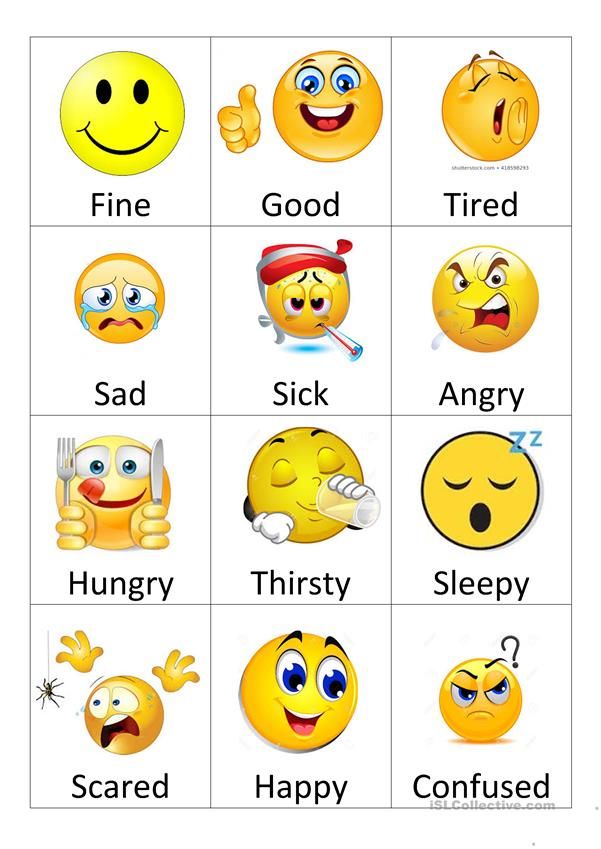 Then explain to your child why the characters feel the way they do. If your child is able to, let them take a turn identifying how the characters are feeling and why.
Then explain to your child why the characters feel the way they do. If your child is able to, let them take a turn identifying how the characters are feeling and why.
I like to read The Way I Feelto young children because it uses beautiful images to describe a range of feelings.
6. When your child does something that upsets someone else, let them know how their behavior might make others feel. For example, “When you called your sister names, she felt sad and her feelings were hurt. “ This will help your child be mindful of what they say and do to others. You can follow up by asking how they would feel if someone did the same thing to them. Encouraging your child to put themselves in someone else’s shoe teaches them how to be empathetic. Empathy is an important life skill that will allow your child to maintain positive relationships with other people.
7. Model appropriate ways to express feelings to your child.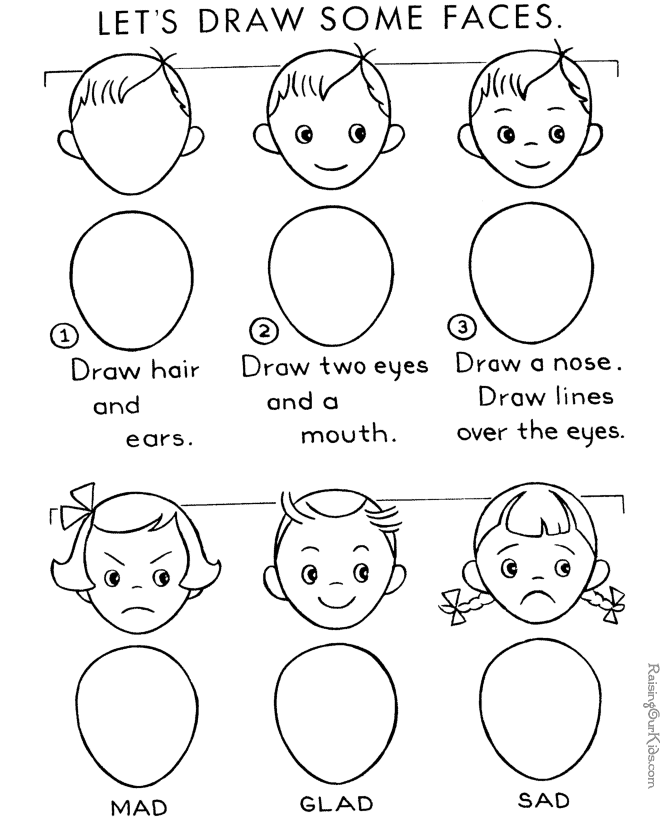 Children are always watching us and like sponges they soak everything up. Good and bad. If your child sees you expressing your feelings in a positive way, over time they learn to do the same. However, if they see you yelling and throwing things when you get upset, they are more likely to mimic this behavior.
Children are always watching us and like sponges they soak everything up. Good and bad. If your child sees you expressing your feelings in a positive way, over time they learn to do the same. However, if they see you yelling and throwing things when you get upset, they are more likely to mimic this behavior.
8. Teach your child appropriate ways to express their emotions.
It’s important that children learn that it is OK to have their feelings. What matters is how they express them. When your child is calm, discuss with them ways they can calm down when they are upset. The ABC’s of Calming Down is a great resource that contains 26 alphabetized calm down strategies to help children calm down.
9. Praise your child when they use words to express their feelings. Having the self-control to express your feelings appropriately is no easy feat. There are many adults who are unable to do this. When your child tells you how they are feeling instead of having a complete melt down, praise them for doing so.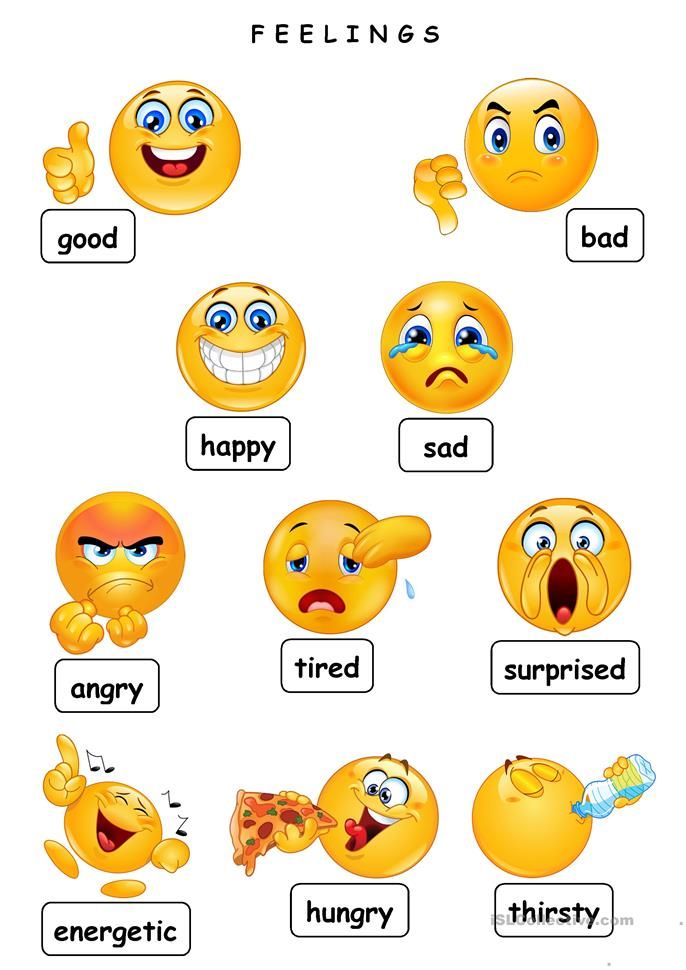 Be very specific. For example, “I like how you told your sister that you were sad when she called you names. That was very mature of you.” Praising your child for practicing good behavior makes them more likely to do it again in the future. It also lets them know that you are watching them and notice when they do good things.
Be very specific. For example, “I like how you told your sister that you were sad when she called you names. That was very mature of you.” Praising your child for practicing good behavior makes them more likely to do it again in the future. It also lets them know that you are watching them and notice when they do good things.
It is important that children learn how to identify and express their feelings in an appropriate manner. Kids who are able to express their feelings are less likely to have meltdowns and temper tantrums. They also have an easier time making friends and getting along with others. For additional resources on teaching children about feelings, check out these Feelings Task Cards.
In what ways do you foster your child’s emotional intelligence?
If you like this article you might also like these articles. (Click on images)
List of Emotions & Feelings for Kids
What’s inside this article: A list of emotions and feelings for kids – this includes the five core emotions, a list of 27 emotions identified by scientists, and a list of 150 emotive words for kids. Includes a PDF version of the list, along with an Inside Out color-coded chart to use as a teaching tool.
Includes a PDF version of the list, along with an Inside Out color-coded chart to use as a teaching tool.
Did you know that there are actually over 34,000 different motive words? Yikes.
But how many different emotions are there?
One scientific study claims there are 27 distinct emotions that humans experience. On top of that, we can experience more than one emotion simultaneously.
We’ll take a look at that list of 27 emotions in a moment – but first. I want to introduce you to a more straightforward concept that I prefer when teaching emotions to children—the Discrete Emotion Theory.
Discrete Emotion Theory
Discrete emotion theory suggests there are five core emotions and thousands of emotion-related words, which are all synonyms or describe varying intensity levels of these core emotions.
The five core emotions:
- Happiness
- Sadness
- Anger
- Fear
- Disgust
What’s great about this concept is that these five core emotions are the same five emotions/characters from the Disney Pixar movie Inside Out.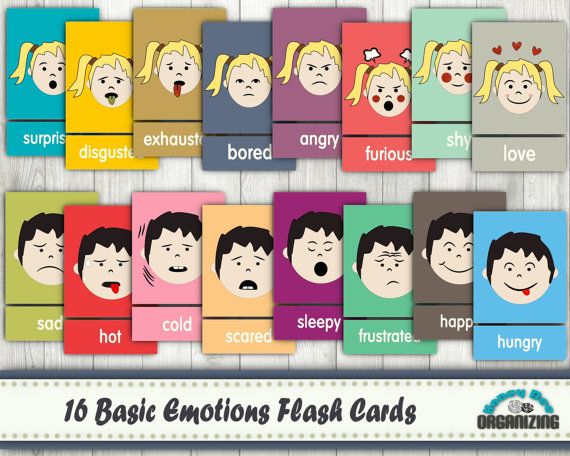
This makes it much easier to teach children about their feelings in a relatable, tangible way.
No child, or even adult, is going to be able to identify 34,000 emotions, and even 27 is way too many for a child to be able to distinguish and understand.
Five core emotions is a much simpler concept to teach children. Later, you can progress to teaching more complex emotive words as your child better understands their feelings.
Let’s look at that list of 27 emotions that we first talked about.
List of Emotions
According to research conducted by the University of California, Berkeley, there are 27 distinct categories of emotions. They are as follows:
- Admiration
- Adoration
- Aesthetic appreciation
- Amusement
- Anxiety
- Awe
- Awkwardness
- Boredom
- Calmness
- Confusion
- Craving
- Disgust
- Empathetic pain
- Entrancement
- Envy
- Excitement
- Fear
- Horror
- Interest
- Joy
- Nostalgia
- Romance
- Sadness
- Satisfaction
- Sexual desire
- Sympathy
- Triumph
As you can see, the majority of these emotions are too complex for children, and some of the core emotions, like happiness and sadness, aren’t even on this list.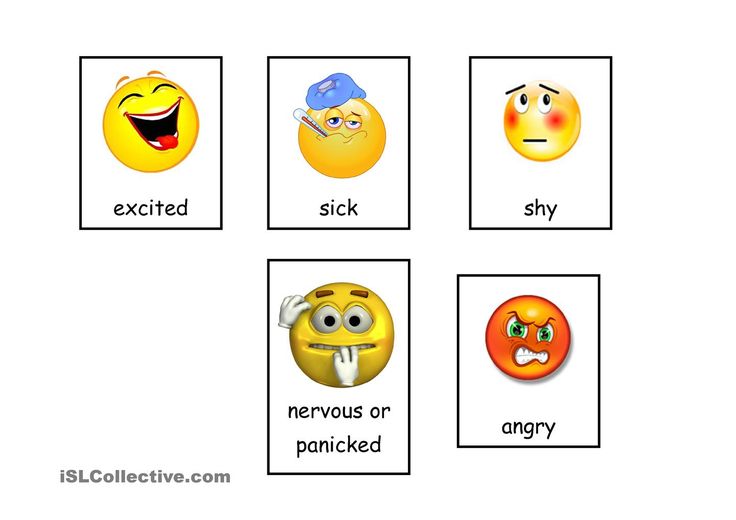
From the moment we are born, we have the ability to experience emotions. But, it’s not until much later that children can identify what they are feeling and why.
That’s part of the reason why toddlers are prone to tantrums and emotional outbursts so frequently. Once children develop recognition of their emotions, they can start learning regulation. Until then, they rely exclusively on co-regulation strategies.
In early childhood, most of what kids know about emotions is learned by observing parents, caregivers, and peers. We name our toddler’s feelings for them, provide comfort, set boundaries, and over time this knowledge comes naturally to many kids.
But, it doesn’t come as quickly to others. Some children continue struggling to identify their emotions and benefit from explicit teaching.
These kids need to learn about specific emotions in detail, with no room for confusion. Basically, emotions are taught the same way schools teach academic skills like math and literacy.
Social-emotional learning programs, such as the Zones of Regulation or Think Social! can help with this. But, there are many other ways to help children learn about feelings, too.
List of Primary Emotions
As mentioned, the primary or core human emotions are:
- Happiness
- Sadness
- Fear
- Anger
- Disgust
If you’re teaching kids about their emotions, this is a great starting point.
Children need to be able to identify their basic emotions before learning more complex emotive words such as frustration, or anticipation, for example.
List of Emotions for Kids
This list breaks down how more complex emotive words can be categorized under five core emotions. You can use this list as a teaching tool when advancing vocabulary.
- Happiness
- Amazed
- Awe
- Bliss
- Cheerfulness
- Confident
- Contentment
- Delighted
- Eager
- Ecstatic
- Enchanted
- Energized
- Engaged
- Enthusiastic
- Excited
- Exhilaration
- Free
- Glad
- Glee
- Inspired
- Invigorated
- Joyous
- Lively
- Loving
- Passionate
- Playful
- Proud
- Radiant
- Satisfied
- Thrilled
- Vibrant
- Worthy
- Sadness
- Anguish
- Depressed
- Despondent
- Disappointed
- Discouraged
- Dissatisfied
- Empty
- Forlorn
- Gloomy
- Grief
- Guilty
- Heartbroken
- Hopeless
- Isolated
- Lonely
- Melancholy
- Rejected
- Remorseful
- Shut down
- Sorrow
- Teary
- Unhappy
- Upset
- Weary
- Weak
- Woeful
- Worthless
- Fear
- Afraid
- Alarmed
- Anxious
- Apprehensive
- Ashamed
- Concerned
- Cowardice
- Dismay
- Disturbed
- Frightened
- Helpless
- Hesitant
- Inhibited
- Mortified
- Nervous
- Panic
- Paralyzed
- Scared
- Self-Conscious
- Shaken
- Terrified
- Timid
- Uneasy
- Uncertain
- Ungrounded
- Worried
- Anger
- Agitated
- Aggravated
- Animosity
- Annoyed
- Bitter
- Bothered
- Contempt
- Cranky
- Cynical
- Disdain
- Disgruntled
- Disturbed
- Edgy
- Exasperated
- Frustrated
- Furious
- Grouchy
- Heated
- Hostile
- Hotheaded
- Impatient
- Irritated
- Irate
- Moody
- On edge
- Outraged
- Peeved
- Resentful
- Spiteful
- Vindictive
- Disgust
- Abhorrence
- Appalled
- Aversion
- Bitterness
- Dislike
- Displeased
- Disturbed
- Hatred
- Loathing
- Nauseating
- Offended
- Repelled
- Repulsed
- Revolt
- Sick
- Skeptical
Finally, If I were to add a 6th core emotion, it would be calm, so the following is a list of emotive words for calm.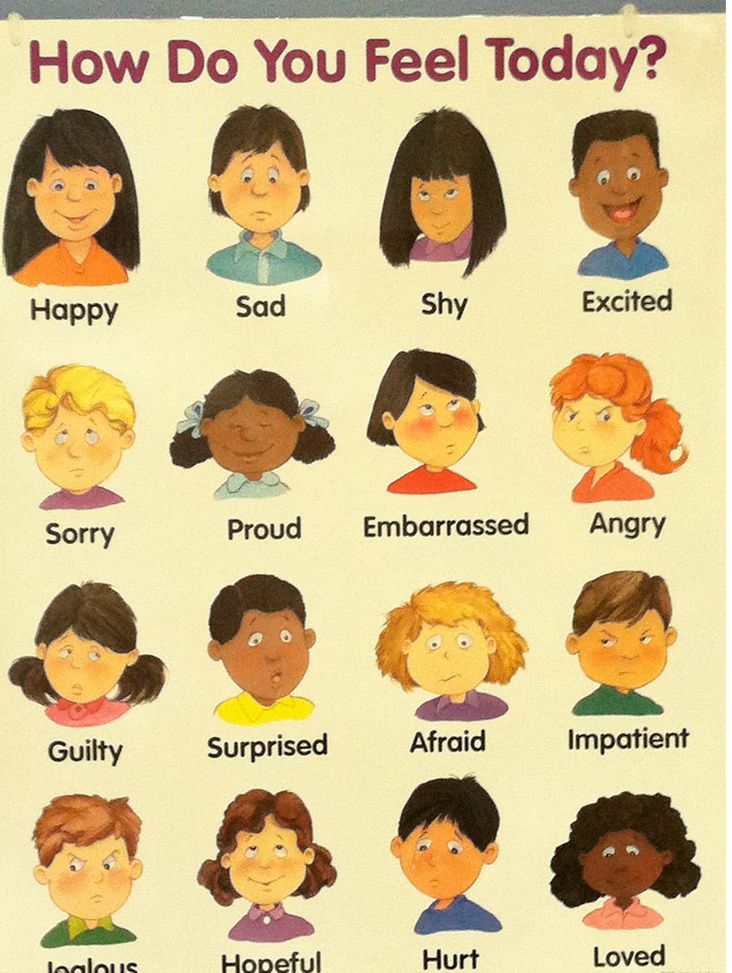
- Calm
- Appreciative
- At Ease
- Carefree
- Centered
- Compassion
- Composed
- Focused
- Mindful
- Patient
- Peaceful
- Present
- Relaxed
- Rested
- Restored
- Serene
- Tranquil
You can download the PDF version of this list here to print and use as a teaching resource.
Download a copy of the chart and emotions list by clicking the button below:
More Resources for Teaching Kids About Feelings:
Looking for more? Here are some great resources to help you teach your kids more about feelings:
- Zones of Regulation Free Printables and Activities
- Emotion Wheel for Kids
- Understand & Coping With Feelings – 86 pg Printable Bundle
- Books About Emotions for Kids
- How to Set Up a Calming Corner
Spread the love
Children's Dictionary of Emotions - Definition of Emotions for Children
When a bright event occurs in life, we emotionally react to it.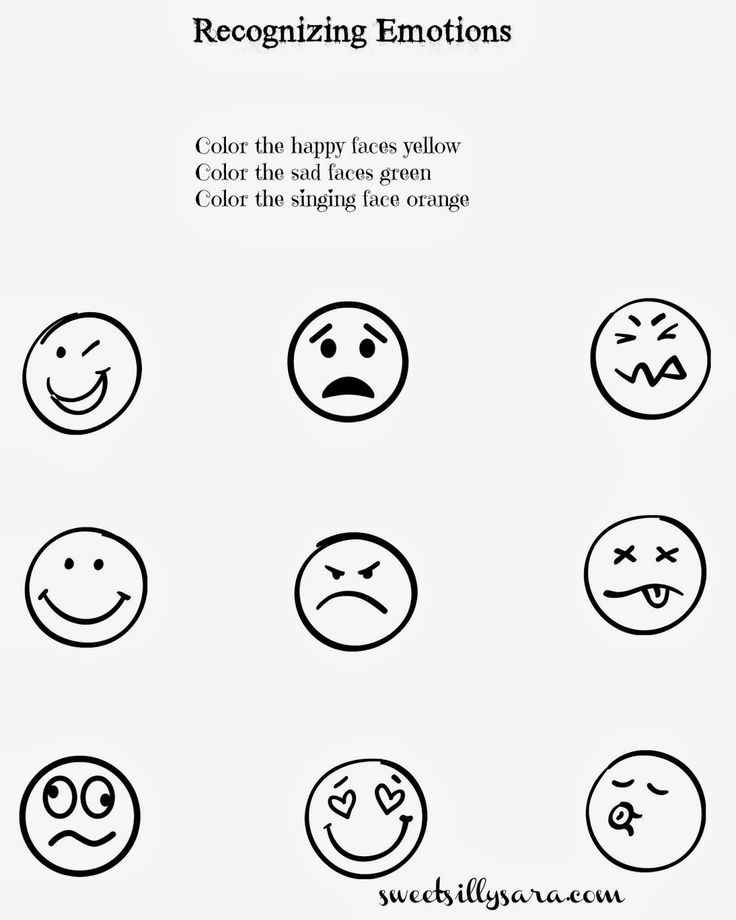 Every person is sad, funny, ashamed. How to explain to a child what emotions are?
Every person is sad, funny, ashamed. How to explain to a child what emotions are?
Our vivid sensations are called emotions. There are quite a few of them. It is important to be able to distinguish them from each other: this helps to know oneself, the inner world of parents and friends, to make speech beautiful, expressive.
Differences between emotions and feelings:
- feelings often last much longer;
- emotions are superficial: quickly arise, quickly disappear;
- feelings are specific, emotions are vague: "I'm scared" (emotion), "I'm afraid of her" (feeling).
Feeling - a set of complex emotions (for example, love consists of interest, joy, etc.)
What a child of senior preschool and primary school age should be able to:
- quickly distinguish emotions from each other;
- understand the emotional state of the interlocutor;
- describe one's own mood;
- choose suitable epithets to describe life situations.
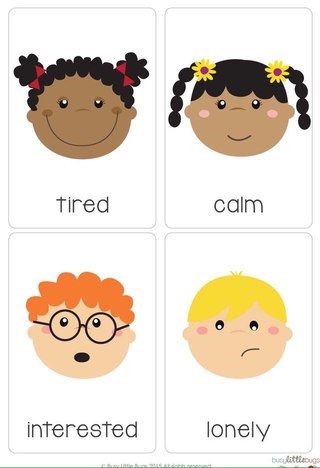
Let's see what emotions exist and how they manifest.
Joy
This positive emotion is familiar to everyone: for example, people experience it when they win a competition, receive a long-awaited gift, hear praise.
The mood rises sharply, we begin to think optimistically: the future seems beautiful, and the world around us is benevolent.
Joy manifests itself in the form of a broad smile, light laughter.
Sadness
Sadness is a negative emotion that we encounter during unpleasant moments of life; the opposite of joy.
We feel sad when we lose, when our plans are broken. Emotion shows that a person's expectations have not materialized into reality.
Sadness also appears when we read sad books or watch movies where something sad happens to the main characters.
Sadness is a slight despondency that does not last very long. The look goes out, the smile leaves the face, but later everything returns to normal.
Anger
Violent, brightly colored negative emotion that can be beneficial - anger helps to start acting.
People get angry when something wrong, unfair from their point of view occurs on the path of life. For example, in a class, a quiet and calm classmate is offended, who does not wish harm to anyone - such a situation can cause the observer to become angry at the offenders.
Anger also signals that the surrounding reality does not allow one to achieve goals, to feel free and comfortable. A stranger got rude on the subway and stepped on his foot? This is one of the cases where anger is natural.
When angry, a person frowns, purses his lips, can look at one point. The opposite of anger is calmness, acceptance.
Fear
Fear is considered to be an evil, unpleasant and destructive emotion for a person, although it can save us from troubles.
This emotion is born when a person realizes that something bad is about to happen.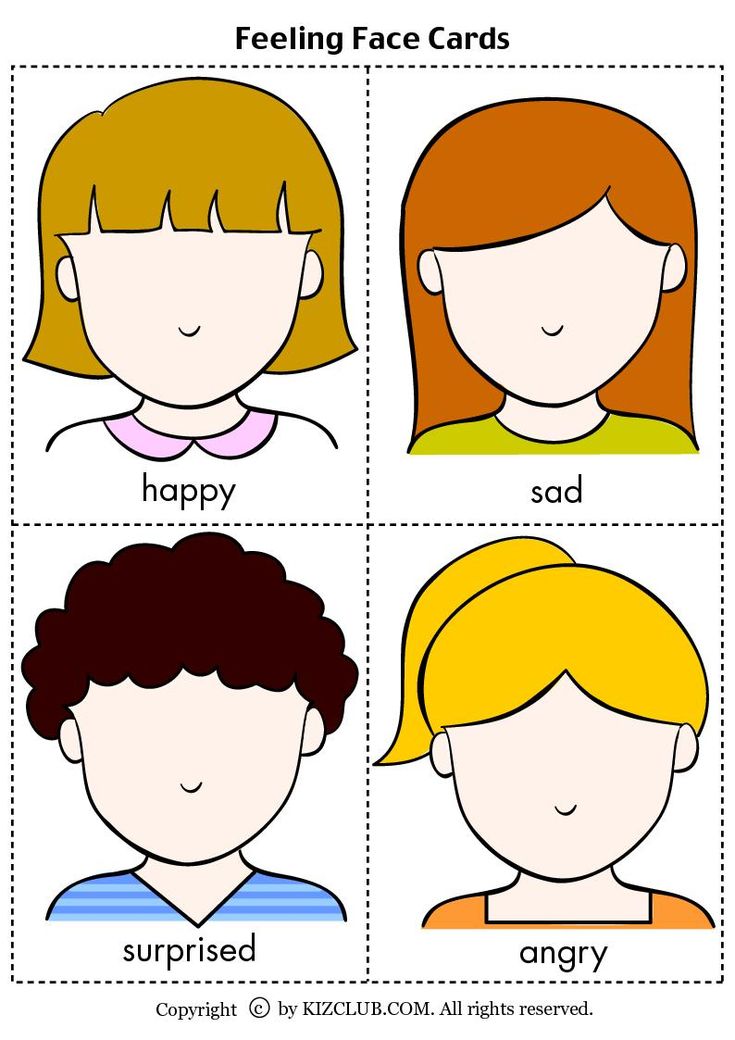 The future threat is not always real, sometimes we ourselves come up with troubles that could happen in the future.
The future threat is not always real, sometimes we ourselves come up with troubles that could happen in the future.
Fear makes our body muster all the strength to fight an obstacle: the heart beats loudly, the body tenses up, the skin turns red or pale.
When the human brain realizes that the threat has passed or turned out to be fictitious, peace returns, the normal state. The opposite of fear is a feeling of complete security.
Admiration
This is a pleasant, uplifting emotion. It arises when we encounter the beautiful, the unique, the rare.
For example, people experience admiration when visiting museums, art galleries. We admire the beauty, grandeur of nature, the complex and mysterious structure of the cosmos.
However, others can also cause this emotion - we like to watch talented people, their work (dance, drawing), follow scientists, heroes, researchers.
Simple things (a fashionable dress, a cute toy) also become an object of admiration.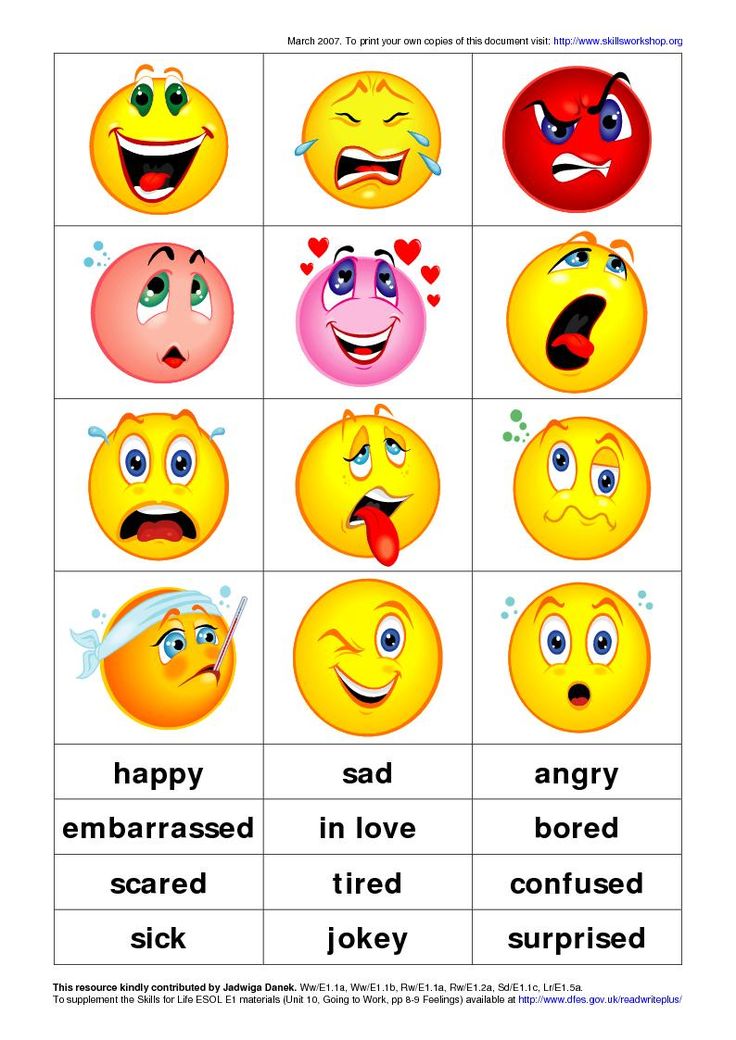 It all depends on the person who is watching what is happening, on his taste.
It all depends on the person who is watching what is happening, on his taste.
The opposite emotion of admiration is disgust, contempt.
How does it manifest itself? A person can smile, raise his eyebrows, slightly round his eyes.
In the online course "Emotions for Children" we will introduce the child to the variety of human feelings and emotions, teach them to assess the emotional state of the interlocutor and correctly express their own emotions. The course is designed in the format of an interactive story game and is designed for children 7-13 years old.
Shame
A very unpleasant, internally destructive emotion, felt as heaviness or burning (people who are ashamed often blush from this experience).
Shame arises when we do ugly or ridiculous things in public. The presence of witnesses is the basis for the emergence of shame. For example, a person will be ashamed of the fact that he cursed loudly in a public place (and then calmed down and regretted it) or slipped and fell into a puddle in front of everyone.
Emotion is born when behavior does not correspond to the ideal - personal or other people's. The opposite emotion is superiority, looseness.
Resentment
Negative emotion that has much in common with disappointment. Its opposite is a slight feeling of forgiveness.
We are offended by a person when he does not live up to our expectations: for example, the betrayal of a best friend causes resentment, because we expect support and loyalty from loved ones. Feeling empty, confused.
You can also meet with resentment when faced with injustice, when the situation cannot be corrected: the student has been preparing for participation in the school Olympiad for a long time, dreamed of winning, showing knowledge, but lost. In the soul, resentment accumulates at oneself, at unfortunate circumstances.
How is resentment manifested? The lip moves forward a little, the person hides his eyes.
Interest
When we meet something new, we automatically show a positive emotion called interest: we stop looking at the object of interest, raise our eyebrows, open our mouth.
People love information: remember how you pay attention to your friends' new clothes, watch bloggers making weird videos.
A person is attracted by unusual things, he hurries to study them, get to know them better and understand: what if knowledge will help in the future? Any fact can be useful.
We may be interested in specific activities, phenomena, people (this is how hobbies, new friends appear). Interest makes you search, reflect, develop intellect and imagination.
The opposite emotion of interest is boredom.
Surprise
Surprise is considered an unusual emotion: it can be both positive and negative.
Indeed, the things that surround us can pleasantly surprise us, and sometimes we experience surprise combined with disappointment or disgust.
For example, the courage of a person who saved a child during a fire, as well as the dishonesty of a thief who stole other people's things, can surprise.
How to recognize this emotion? The man raises his eyebrows, lips and eyes round.
Indifference is the exact opposite of surprise.
Disgust
When we strongly dislike something, we make faces and squint. Wrinkles appear around the mouth and eyes. This is disgust.
One can feel disgust towards real objects: such an emotion will be caused by spoiled food, mold.
They also feel disgust towards bad people who do terrible things (for example, criminals).
Why does disgust appear? This is how the brain reacts to things that can harm: cruel people, surfaces with harmful microbes, etc.
Delight, pleasure are emotions opposite to disgust.
Contempt
This emotion is externally manifested through pursed lips and a slightly slow look.
Unlike disgust, contempt can only be felt for people and their actions. Tastes, smells, objects are not included here.
Everyone has an idea in their head about what is good and what is bad. Contempt appears when a person does not correspond to our ideas about what is good and right.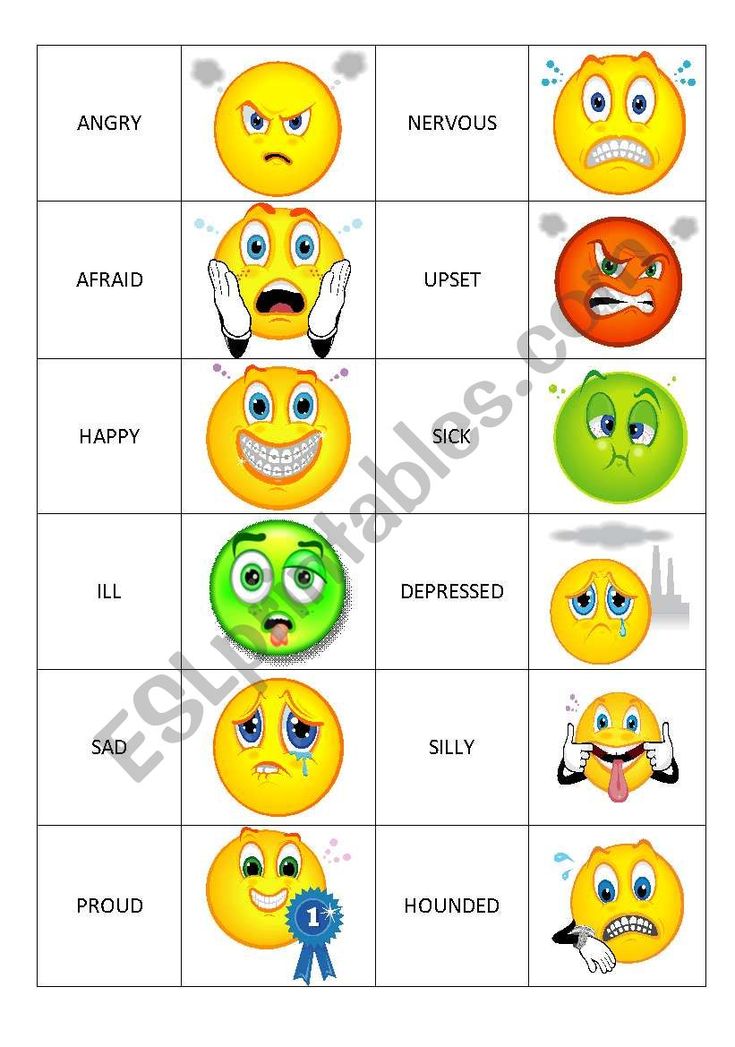 Sometimes this emotion helps us feel better than others.
Sometimes this emotion helps us feel better than others.
Admiration and respect are emotions directly opposite to contempt.
Guilt
Causes a heavy sensation in the chest, intense gaze.
A person feels guilty when he realizes that the perfect deed was bad, wrong.
This is a state in which we punish ourselves for insults, insults of loved ones. Perhaps no one we know condemns us, but we feel that we need to ask for forgiveness.
The emotion of rightness, confidence is opposed to guilt.
Suffering, grief
Grief is an emotion that brings a huge amount of mental pain. We suffer when a beloved pet dies, a loved one dies.
In moments of grief, people cry, sob, refuse to have fun. Pay attention only to the unpleasant event that caused the suffering.
This is a complex process: sometimes the grief does not disappear for a long time.
A completely different emotion is the feeling of happiness, success, absolute satisfaction.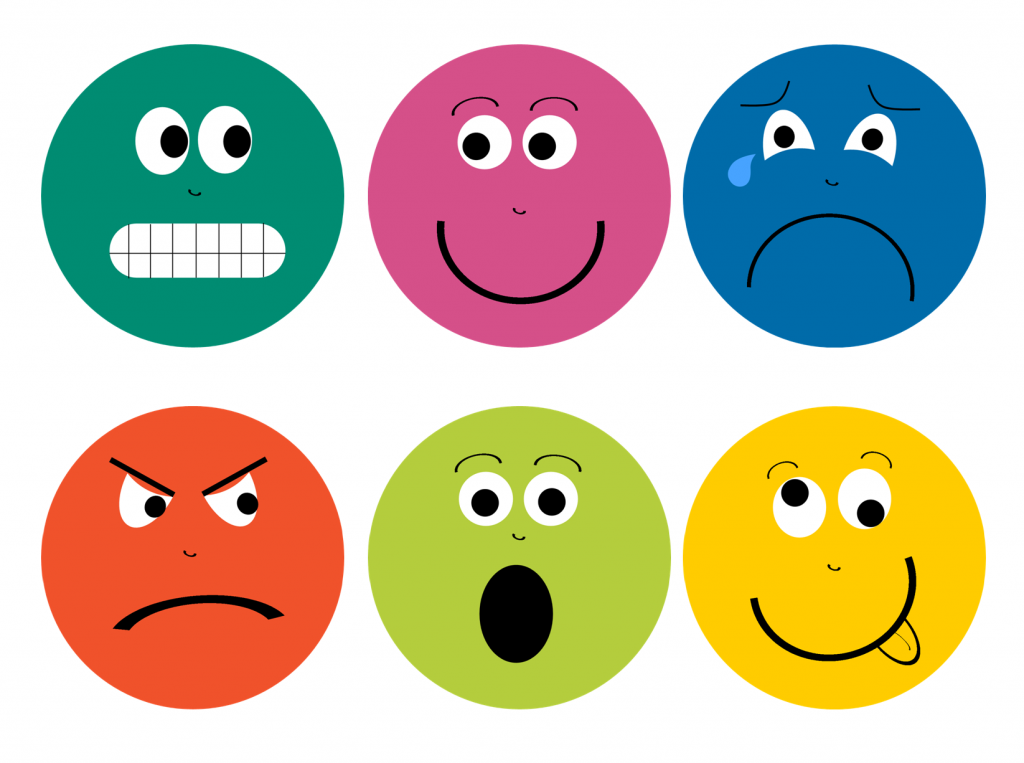
. Life becomes more pleasant, you enjoy spending time waiting.
Sound familiar? This emotion is called anticipation: nothing happened, but you planned a good event and imagine what it will be like.
A person who is in anticipation becomes more energetic, smiles more often; the opposite of anticipation is hopelessness.
Pleasure
A positive emotion that makes us smile, laugh, feel short-term happiness.
Occurs when a person achieves a goal (not even a very important one) — you can get pleasure from a portion of ice cream, buying a gadget.
Unlike joy, pleasure is not a deep emotion. It's easier to get, but it disappears quickly. Joy pleases with its presence much longer.
Moreover, pleasure is more often associated with sensations that we receive with the help of the senses: for example, a pleasant smell, a feeling of coolness on a hot day, a soft pillow, etc.
The opposite is inconvenience, suffering.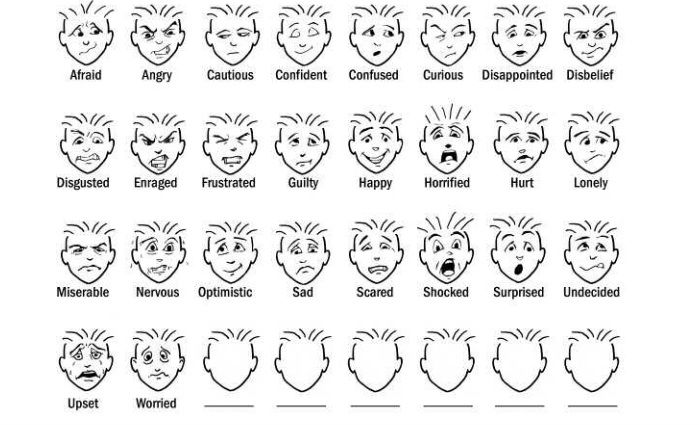
Grief
This is an unpleasant emotion that occurs when contacting people, the outside world. Its opposite is joy.
When upset, the corners of the lips go down, the person looks sad.
Disappointment is born from our dissatisfaction: you and your friends dreamed of going to a cafe, but when you arrived, it turned out that it was already closed.
The emotion of grief does not torment us for a long time: a person is upset, but quickly realizes that the problem is not very serious. Grief is not such a painful emotion as grief, sadness.
Anger
Anger is an emotion directed at a person or phenomenon. A state of irritation, rage, hostility. The opposite is kindness, calmness.
When angry, people frown, cannot sit still, speak loudly.
People feel angry during a violent fight, wanting to hit the opponent; at the moment of humiliation, insult.
You can be angry with yourself: this is how a person shows that he is dissatisfied.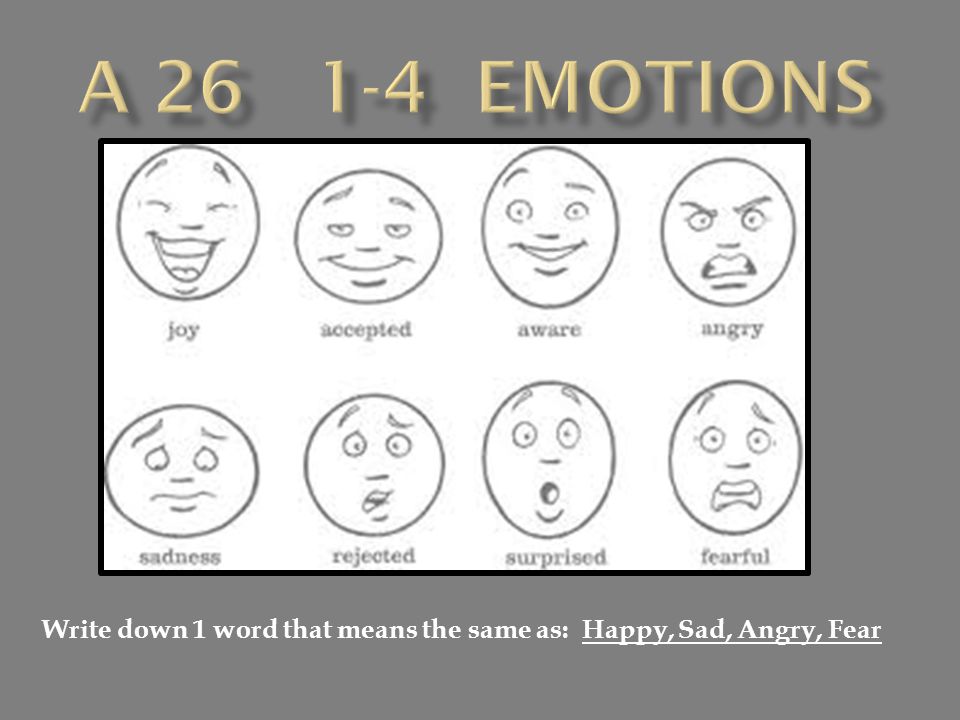 For example, a broken leg is angry with himself for inattention and frivolity.
For example, a broken leg is angry with himself for inattention and frivolity.
Humiliation
Every person has a sense of dignity. It is a feeling of value: "I exist, I deserve love and respect, my thoughts and desires have meaning."
When we are in a group (class, group of friends, family), people can put us down. They utter words that make you think: what if I'm bad, stupid, ugly, inept?
At the moment of humiliation, a person hides his gaze, may blush. Sometimes behavior changes: for example, after an evil mockery, a sociable classmate becomes quiet, withdrawn.
Emotion, the opposite of humiliation - veneration, support.
Fright
Fear appears when an unexpected and at the same time unpleasant situation arises; is the antonym of peace.
The man started to cross the road, but did not notice the car coming around the corner. I had to react quickly so as not to get under the wheels. The threat to life caused a strong fright.
Outwardly, fright manifests itself as follows: the heart beats faster, arms and legs may tremble, eyes become round, the person shudders.
Envy
Complicated emotion that destroys good mood and confidence. The opposite of friendliness.
Occurs when we compare ourselves with other people: for example, a classmate seems smarter and more beautiful. We regret that we do not have the same sharp mind, long hair.
Envy causes heaviness in the soul: a frown, lack of a smile. An envious person lives with pain, does not know how to get rid of it.
Emotion is often used for the right purposes — envy makes one develop, learn. But anger towards a person whom we envy will not bring any benefit.
Emotion recognition games
You need to be able to recognize other people's emotions, correctly assess the behavior of others. There are many games and exercises to practice the skill.
"Mirror"
The most popular game for developing the emotional intelligence of a child.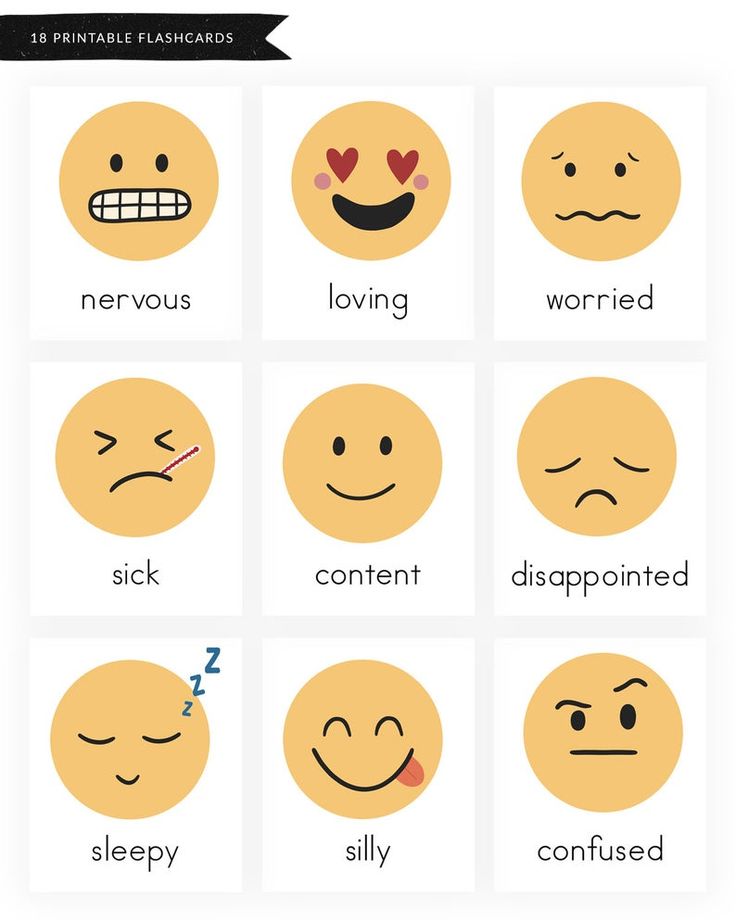 You can play alone or in a group.
You can play alone or in a group.
The host thinks of an emotion, depicts it with the help of facial expressions, gestures, posture. The task of the participants is to name the emotion and repeat it. Another option is for participants to guess the emotion, but portray the opposite.
“Name an emotion”
Open photos of people, cartoon characters, fairy tales, games on the big screen. The child needs to describe what emotions each of them experiences.
Picture books are helpful: as you read aloud, pay attention to the illustrations: "How does the character feel and why?" An additional exercise makes the plot more interesting, develops imagination.
“Imagine…”
Make a list of situations that can cause conflicting emotions, positive and negative.
The task of the players is to tell what emotions visit them.
For example: “Imagine that you were going to wish your friend a happy birthday, but found out that he decided not to invite you to the party”, “Imagine that your jacket was torn at school because they wanted to harm”.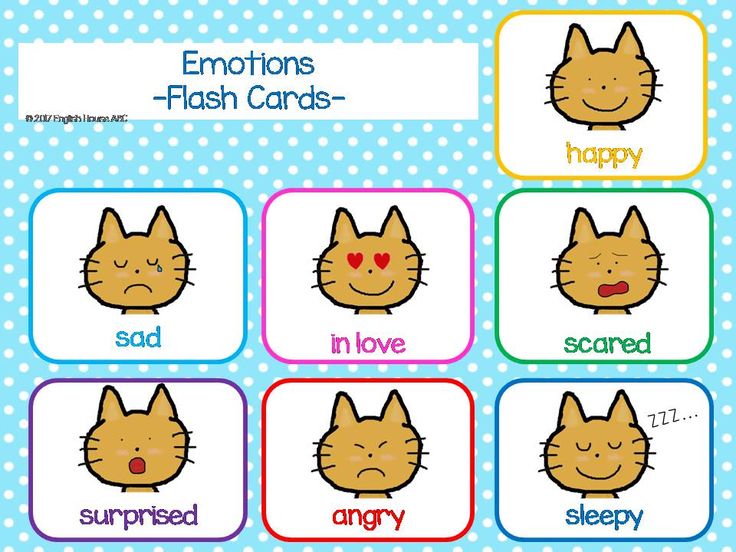
"Tell me about yourself"
The players stand in a circle. The host stands in the center with the ball, chooses a participant, throws the ball to him, asks the question: “What makes you happy?”, “What makes you angry?” The participant thinks, answers the question, passes the ball to another.
The game develops the skill of recognizing emotions, introspection. Participants react quickly, observe the emotional state of other players.
Theoretical training is not enough to quickly understand the shades of human emotions. Regular training in the form of a game, practical exercises are required. The emotionality of parents helps the child to begin to navigate in the world of emotions. It is necessary to discuss emotional responses to life events, to take time to discuss feelings and emotions.
Emotional intelligence for children
We introduce children to the types of emotions, how to manage them and how to show themselves in teamwork, through situational games
learn more
Emotions for children - we study feelings and emotions with children simply and visually
We will introduce the child to the variety of human emotions, teach them to express their feelings and recognize the emotions of other people through exciting story games
Try for freeTry for free
Why should a child study emotions?
Better understand yourself
It is sometimes difficult for a child to even realize, and even more so to formulate what he wants now, what he feels, why he suddenly became uncomfortable.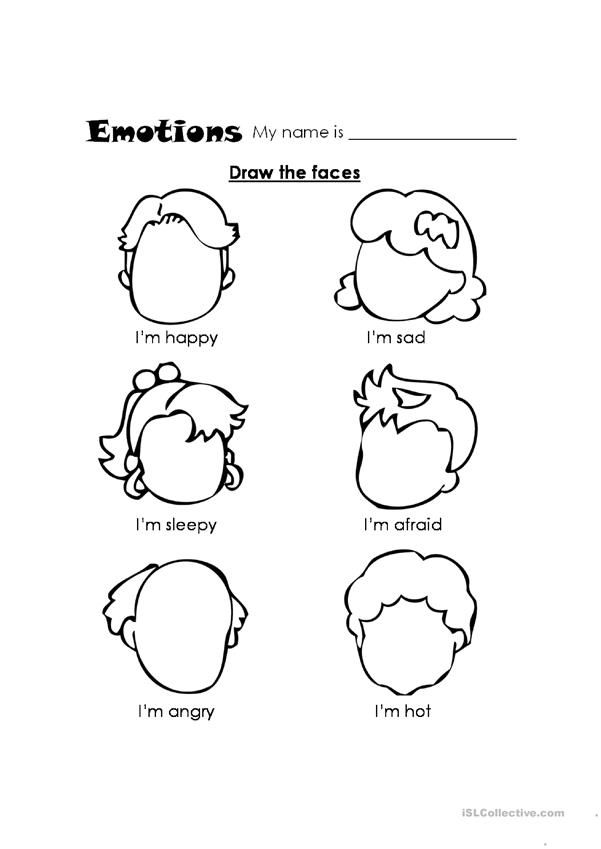 And most importantly, understand what to do with it. Knowing the emotion "in the face", the child will not be at a loss in front of her.
And most importantly, understand what to do with it. Knowing the emotion "in the face", the child will not be at a loss in front of her.
Manage your emotions
Emotions arise uncontrollably, but how to dispose of them is up to us. Even a brave person can be frightened, but at the same time one will cry and hide, while the other will look fear in the face and defeat it. And this is exactly what you should learn from childhood - otherwise you won’t become successful.
Communicate more effectively with people
For productive communication, it is important to be able not only to recognize the emotions of others, but also to correctly express your own. Many will prefer to deal with a calm, friendly interlocutor, and not with a closed beech or a person who expresses his feelings too violently.
Protect yourself from manipulation
Each of us hides our true emotions in some situations. Sometimes it's a matter of etiquette. But sometimes people can pretend to benefit at our expense and even harm us on purpose. This is where basic knowledge of human emotions comes in handy.
Sometimes it's a matter of etiquette. But sometimes people can pretend to benefit at our expense and even harm us on purpose. This is where basic knowledge of human emotions comes in handy.
What should a child know about emotions?
What are emotions and how they arise
The child should learn that emotions are a reaction to what happens to him. They help us to be aware of our attitudes to people and events, regulate behavior and better understand others. Emotions can arise spontaneously, but there is no need to be afraid of this - they can and should be controlled.
How to visually distinguish one or another emotion
People don't often talk about their feelings and emotions directly. How do you know if a person is scared or sad? Is he happy or nervous? Surprised or interested? Is he sincere? You can distinguish the emotions of other people based on their facial expressions, facial expressions, actions.
How to control your own emotions
Those who do not know how to cope with their emotions are perceived as ill-bred and unpleasant people. Children are usually forgiven for inappropriate expressions of emotions, but the sooner the child learns to take control of them, the better he will get along with people and the more he will achieve in the future.
How to introduce a child to emotions and feelings?
Be sincere with children
Parents who believe that the manifestation of emotions is a weakness and it is better to ignore them altogether will grow up unhappy, socially unadapted children. Feel free to express your feelings in front of a child: angry, laughing out loud, sad. Let him understand that different emotions are normal.
Draw the child's attention to his emotions
If you see that the child, for example, is sad, turn to him: “You are sad. What happened? And what do you think to do with it? It is important that he understands: he will not be punished for what he feels, you are ready to analyze his feelings with him - and you will always tell you how to express them, what to direct them to.
What happened? And what do you think to do with it? It is important that he understands: he will not be punished for what he feels, you are ready to analyze his feelings with him - and you will always tell you how to express them, what to direct them to.
Expand your child's emotional vocabulary
Psychologists have noticed a connection between emotional vocabulary and communication and introspection skills. Use at home more synonyms for words denoting sensations. Address the shades of emotions. For example, the general “evil” may mean “irritated”, “angry”.
Read and analyze literature together
The ability to empathize is formed when a person imagines himself in the place of another. Invite the child to imagine how he would feel if he were in the place of one or another literary hero. What would you do with these emotions? Would you express them or hide them? How would you proceed from them?
Learning emotions with children in an interactive
game format
Take a Free Trial Lesson
Explore the interactive play activities your child will have with Umnaziah's Introducing Emotions course.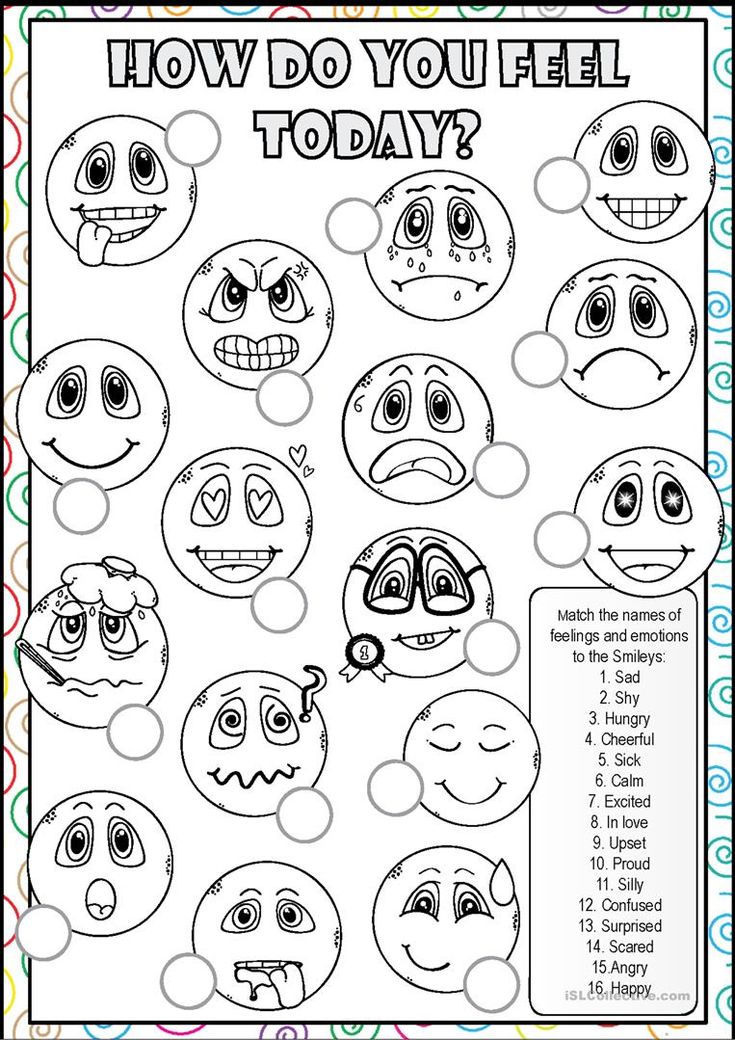
Try
The structure of the course "Emotions for children"
10 THEMED LESSON GAMES 30-40 MINUTES EVERY
Each lesson is dedicated to one of the situations or emotions. The theory for the lesson is presented in the format of short stories and interactive tasks designed for children aged 6-13.
40 FUN CHALLENGES BUILT INTO THE LESSON SCENARIO
Each lesson contains 5-7 tasks to consolidate the material covered. All tasks have a plot and bright illustrations or are presented in the form of a game.
UNLIMITED ACCESS TO ALL COURSE MATERIALS
The child will be able to take the course as many times as he needs. You buy the course once and can return to it even after 5 years.
INTERACTIVE KNOWLEDGE QUIZ GAME
The course ends with an interactive quiz game, for the successful completion of which the child receives a certificate. You will be confident in his knowledge!
You will be confident in his knowledge!
What topics do we study in the course "Emotions for Children"?
Galaxy of Emotions
Joy and Sadness
Fear and Anger
Interest and Surprise
Trust and Aversion
Complex emotions
What is empathy?
Dating Cloak
Control helmet
Find yourself
Start training
Examples of tasks for the study of emotions
Explore the other steps of the Emotional Intelligence for Kids course
"Introducing Emotions" is the first of four steps in the Emotional Intelligence course for children from Umnaziah.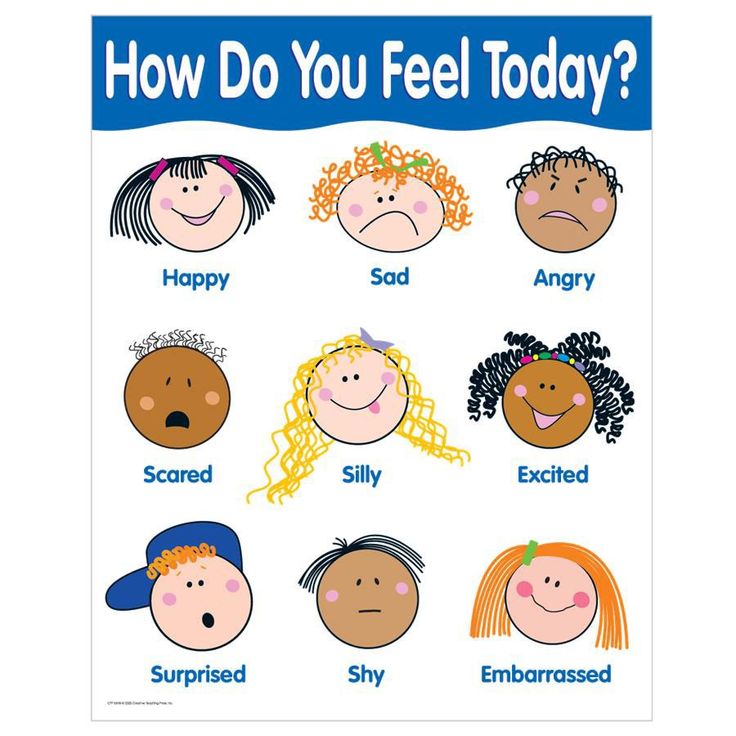 See what topics our students are studying in other levels.
See what topics our students are studying in other levels.
Getting to know emotions
In this course, we will introduce the child to the spectrum of human emotions, try to understand their own feelings, and learn to recognize and recognize the emotions of others. How are curiosity and surprise related? Is it possible to stop worrying at the blackboard and is fear so terrible?
Personality types
The main objective of this course is to show the child the diversity of human characters. We are all different in some ways, but similar in some ways. Why do some guys easily make new acquaintances, while others are reluctant to make contact, and how do different people make decisions?
More
Teamwork
The course is designed for children 9-13 years old and introduces the child to the basic principles of teamwork, teaches to identify and take into account the strengths of each team member and give constructive
feedback.